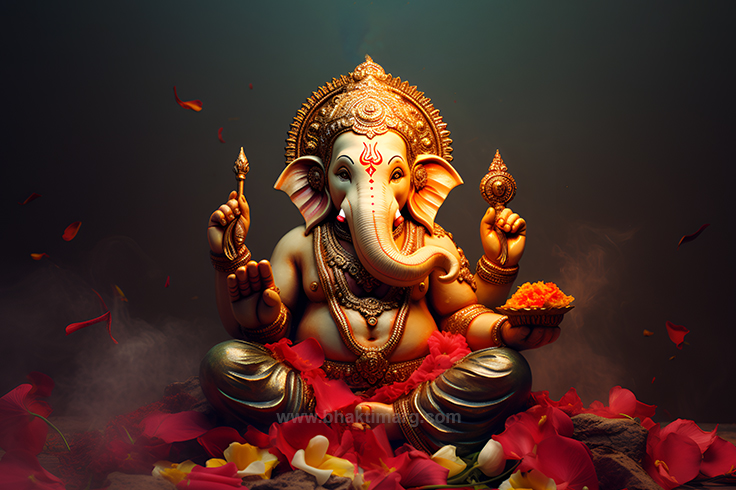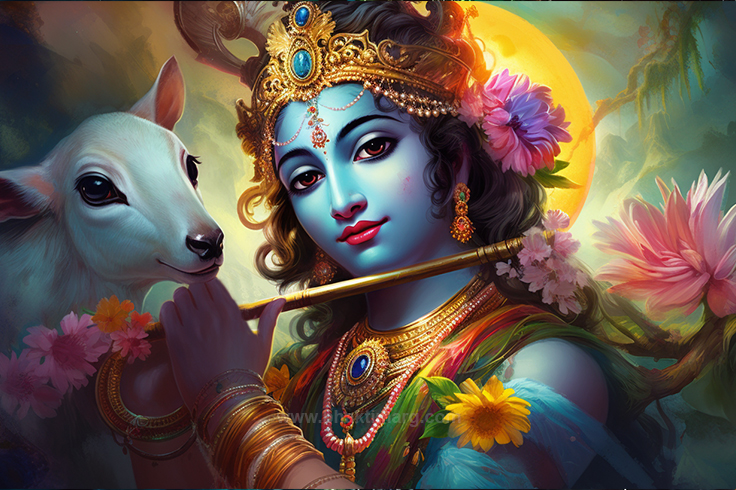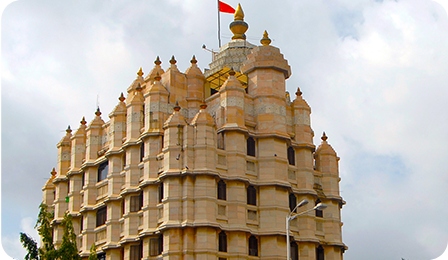The 10 Avatars of Lord Vishnu
The Hindu tradition is vast with various gods-goddesses and deities each having a role in the smooth functioning of the universe. Lord Vishnu is one of the supreme gods among the Hindu trinity who plays the role of the preserver and protector of the universe. Other than that he is known for his ten primary avatars or incarnations, called the Vishnu Dashavatara. According to legend whenever the rise of evil threatened humanity, righteousness was wanned under the bad, and good was overpowered by bad, Bhagwan Vishnu took a form to teach humanity the importance of Dharm, Karm, Satya, and Prem.
Hence each incarnation of lord Vishnu represents the divine intervention of Vishnu to restore cosmic order (dharma) by defeating evil forces (adharma). These avatars range from animal forms to human-like figures, embodying different aspects of protection, compassion, and justice. Let’s explore the Dasavatharam of Vishnu, delving into their significance and the lessons they convey in the context of dharma, evolution, and spiritual growth.
Lord Vishnu Avatars and Their Significance:
1. Matsya Avatar:
![]()
As the name suggests this first incarnation of lord Vishnu, appears as a gigantic fish in the Satyuga, the first of the four Yugas (epochs) in Hindu cosmology. This legend mentions the epic flood that drowned the whole world and the Matsya avatar saved humanity and sacred scriptures from a great flood, reminiscent of the Noah’s Ark story in other cultures. Scriptures mention a demon named Hayagriva had stolen the Vedas from Brahma, the creator. To protect the sacred texts, Lord Vishnu took the form of Matsya, guiding the sage Manu’s boat during the flood. Matsya slew Hayagriva and restored the Vedas representing the preservation of knowledge and wisdom. It also highlights the cyclical nature of the universe, with creation, preservation, and dissolution occurring repeatedly.
2. Kurma Avatar:
![]()
The second among Lord Vishnu’s Avatars, is a form of a tortoise to support Mount Mandara he appeared in this form during the churning of the ocean by the Devas (gods) and Asuras (demons) to obtain the nectar of immortality (amrita). This is also one of the instances during the Satayug when the whole world became devoid of Laxmi and Prosperity. At that point the ocean was churned to retrieve amrita, and the mountain began sinking due to the lack of a stable base. Vishnu, in the form of Kurma, dove beneath the ocean to stabilize the mountain on his back, allowing the churning to continue. Kurma among the 10 incarnations of Vishnu represents patience and perseverance signifying the importance of balancing life’s challenges while remaining grounded and steady.
3. Varaha Avatar:
![]()
Vishnu Puran mentions this as the third avatar among the dasavatharam of Vishnu that appeared as a powerful boar. His visual depiction is always in the form of lifting the Earth from the cosmic ocean where it had been submerged by the demon Hiranyaksha who had dragged the Earth to the bottom of the ocean. In his Varaha form, the lord fought the demon for thousands of years and finally rescued the Earth, carrying it on his tusks. Varaha symbolizes the restoration of balance and order. This incarnation of lord Vishnu illustrates the protection of the Earth and its environment, making it a crucial story for contemporary ecological lessons.
4. Narasimha Avatar:
![]()
This fourth avatar, is one of the most fearsome among the Vishnu Dashavatar, in this for he embodies both human and animal features. Scriptures mention he took this avatar to defeat the demon king Hiranyakashipu, who was granted near invincibility by Brahma, with the condition that he couldn’t be killed by a human or animal, indoors or outdoors, during day or night, and with any weapon. Ironically Hiranyakashipu’s son, Prahlada, was a devout follower of Vishnu, much to his father’s dismay. Narasimha represents divine justice and the triumph of good over evil, to protect his devotee and destroy the arrogant king, Vishnu manifested as Narasimha, half-man, half-lion, and killed Hiranyakashipu at twilight, on the threshold of a palace, using his claws. His form is a reminder that evil can be destroyed through clever means, even when it appears invincible.
5. Vamana Avatar:
![]()
The fifth incarnation of lord Vishnu, Vamana, is depicted as a dwarf Brahmin, symbolizing humility. This avatar is associated with the story of Bali in the scriptures, he was said to be a righteous but ambitious demon king who gained control over all three worlds. Bali had become powerful, conquering the heavens and the Earth, to rein his ambition, Shri Hari took the form of a dwarf Brahmin and asked for land that would be covered in his three paces. Bali, known for his generosity, granted the request, the lord expanded to cover the entire universe in two strides and left the third on Bali’s head, pushing him to the netherworld/underworld also called Patala. Vamana avatar thus teaches the lesson of humility and the danger of unchecked ambition, representing the theme of divine intervention when dharma is threatened by excess power.
6. Parashurama Avatar:
![]()
This is the sixth avatar from the dasavatharam of Vishnu, who was born as a Brahmin but became a warrior and received an iconic axe, from his aradhya Lord Shiva. According to the scriptures in this Vishnu Dashavatar story vengeance, righteousness, and the defense of the oppressed are highlighted. Parashurama was incensed by the tyranny of the Kshatriya rulers, who were abusing their power and exploiting the weaker classes. In his anger, he vowed to rid the Earth of corrupt Kshatriyas and did so 21 times. However, his fury was ultimately tempered as he learned the importance of mercy. Parashurama’s story emphasizes the importance of justice and the use of power responsibly. He also represents the balance between knowledge (Brahmin) and strength (Kshatriya). This incarnation of lord Vishnu is one among the Chiranjeevi, though born in Satyuga he reappeared in TretaYuga and Dwapar Yuga and is prophesied to appear in Kaliyuga assisting another lord Vishnu’s avatar
7. Rama Avatar:
![]()
This is the seventh incarnation of lord Vishnu, and is one of the most revered deities in Hinduism referred to as Bhagwan Shree Ram who existed in the Treta Yug. The legend of this Vishnu Avatar is told in the epic scripture of Ramayana, where he is portrayed as the epitome of virtue, duty, and righteousness. Rama’s life was filled with challenges, from exile to rescuing his wife Sita from the demon king Ravana. Yet despite all personal hardships, he upheld dharma (righteousness) at every step, serving as the ideal king, son, husband, and warrior. Rama represents the perfect adherence to duty (dharma), no matter the personal cost hence, it is called Maryada Purushottam. His life is a guide for righteous living, making him a role model for all.
8. Krishna Avatar:
![]()
Krishna, the eighth among the 10 incarnations of Vishnu, is perhaps the most multifaceted among all his avatars, he was aware of his divinity and hence is a revered god among Hinduism referred to as bhagwan shri krishna and existed in the Dwapar Yuga. His story is detailed in the Mahabharata and the Bhagavad Gita, as a divine statesman, cowherd, lover, and friend, Krishna played pivotal roles in maintaining dharma in various stages of his life. Krishna’s appearance as the loving kanha ji with Radha Rani and Gopi’s, the guidance to the Pandavas during the Kurukshetra War, particularly his discourse to Arjuna in the Bhagavad Gita, is among the most profound spiritual teachings in Hinduism. This dasavatharam of Vishnu is described as the playful and mischievous childhood, as well as his strategic brilliance in warfare, further making him a unique avatar and a symbol of divine love, wisdom, and the path of devotion (bhakti). His teachings in the Gita on duty, righteousness, and detachment are timeless spiritual lessons that are revered even today
9. Buddha Avatar:
![]()
The ninth among the lord Vishnu avatars is said to be the Gautama Buddha, who introduced the world to the path of non-violence, compassion, and enlightenment. Siddhartha Gautama was a prince prophesied to renounce his princely life in search of truth and enlightenment in this process he became Gautam Buddha. He wanted to search for a way to remove suffering and through meditation, he attained Nirvana and spent his life teaching the Middle Path, emphasizing detachment from worldly desires that would end suffering. This teaching is reassuring of what Bhagwan Shri Krishna taught in Bhagvad Geeta. Buddha’s incarnation highlights the importance of compassion and self-awareness signifying peace and the rejection of violence and materialism.
10. Kalki Avatar:
![]()
The 10 incarnations of Vishnu are prophesied to appear in the 4 Yuga’s span and Kalki according to scriptures is the final avatar, and it is yet to appear. According to Hindu belief, Kalki will come at the end of the Kaliyuga in the darkest time of the present age of darkness and corruption to restore dharma and bring about a new era. In Vishnu Puran and Kalki Puran Lord Kalki is depicted as a warrior on a white horse, wielding a sword, his arrival will mark the end of the current cycle of time, after which the world will be reborn. Kalki represents the inevitable destruction of evil and the restoration of righteousness. His avatar is a reminder that even in the darkest times, justice will eventually prevail.
The Dasavatharam of Vishnu reflects the cyclical nature of time, the protection of dharma, and the evolution of life itself. If noted through history each lord Vishnu avatars comes to the Earth with a specific purpose, embodying virtues such as wisdom, strength, humility, and righteousness. Within the moment humanity is under threat and justice needs to prevail these avatars offer timeless lessons and continue to inspire devotion, compassion, and justice across generations.
Read more blogs:









